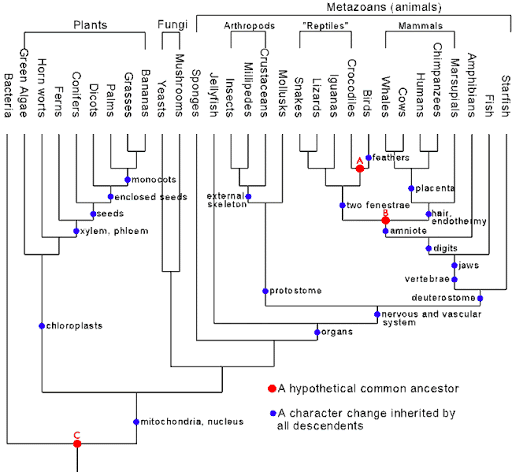This image represents which characteristic of life?

What is growth and development.
Living or Non-Living:
Oxygen
What is non-living or abiotic.
True or False:
Eukaryotic cells are believed to be the first cell to live on Earth.
What is false.
This characteristic of life is also known as the smallest unit of life. Different types of these include prokaryotic and eukaryotic.
What is made of one or multiple cells.
Living or Non-Living:
Plants
What is living or biotic.
Using your understanding of evolutionary psychology, which emotion readies an organism to protect itself and or others; may be followed by anger.

What is fear.
The image represents this characteristic of life.

What is respond to stimuli or environment.

Living or Non-Living:
The Sun
What is non-living or abiotic.
According to the phylogenetic tree below, which organism is closest in relation to Birds?
a. Whales
b. Lizards
c. Crocodiles
d. Ferns

What is c. Crocodiles
This characteristic of life deals with making new organisms or members of a population.
What is reproduction.
Living or Non-Living:
eukaryotes
What is living or biotic.
Using your understanding of evolutionary psychology, which emotion evolved to support social well-being and social relationships.
a. Romantic love
b. Anger
c. Fear
d. Embarrassment
What is d. Embarrassment.
This characteristic of life can occur through a process known as natural selection.
Adapt through evolution.
Living or Non-Living:
Virus or covid-19
What is non-living or abiotic.
Fossils have been found that provide a link in the evolution of whales from:
a. two-legged aquatic animals.
b. legless terrestrial amphibians.
c. flightless birds.
d. four-legged land mammals.
What is d. four-legged land mammals.